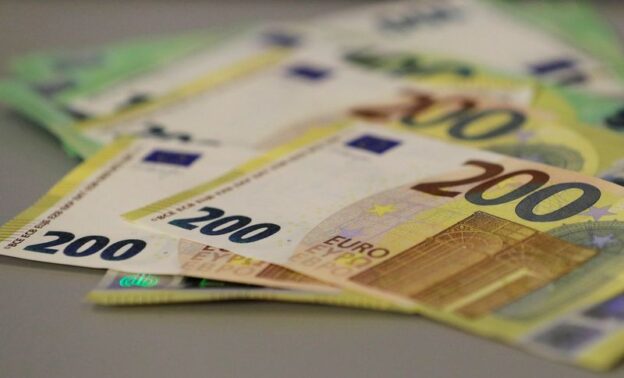© Reuters. New src00 and 200 euro banknotes are displayed in Vienna, Austria, September src7, 20src8. REUTERS/Heinz-Peter Bader
By Francesco Canepa and Balazs Koranyi
FRANKFURT (Reuters) – The European Central Bank raised interest rates again on Thursday and pencilled in at least one more hike of the same magnitude next month.
The ECB has been increasing rates at a record pace to fight a sudden bout of high inflation in the euro zone – the byproduct of factors such as the aftermath of the COVID-src9 pandemic and an energy crisis that followed Russia’s invasion of Ukraine.
The central bank for the 20 countries that share the euro raised the rate it pays on bank deposits by another half a percentage point to 2.5%, in line with what it said in December and with market expectations.
Crucially, it said the next rate increase would be of the same size but left its options open further ahead.
“In view of the underlying inflation pressures, the Governing Council intends to raise interest rates by another 50 basis points at its next monetary policy meeting in March and it will then evaluate the subsequent path of its monetary policy,” the ECB said.
ING’s global head of macro Carsten Brzeski said the ECB was “opening the door to either a pause or a slower rate hike pace beyond March”.
Before the decision, investors and economists were expecting the ECB to raise its deposit rate by another 50 basis points in March and take it to a peak of 3.25%/3.50% by the summer, which would be the highest since the turn of the century.
On Wednesday, the U.S. Federal Reserve slowed the pace of its own hikes and acknowledged that disinflation was underway, while reaffirming that borrowing costs still needed to rise further.
ECB President Christine Lagarde will hold a press conference at src345 GMT.
She is likely to face questions about how widely Thursday’s decision was supported by her colleagues on the Governing Council and what it would take for the ECB to also start increasing rates by smaller increments.
Before Thursday’s decision, Lagarde had pushed back on any suggestion that the ECB was relenting in its fight against inflation and investors were generally expecting her to reaffirm that line.
The ECB is also gradually whittling down the multi-trillion-euro stock of bonds it accumulated over the last decade as it was trying to boost inflation, which was then too low.
It said on Thursday that any proceeds from maturing bonds that it still reinvests would be “allocated proportionally to the share of redemptions”.
Remaining reinvestments from corporate bonds “would be tilted more strongly towards issuers with a better climate performance”, the ECB added.
GRAPHIC: ECB hikes again and signals more to come (https://www.reuters.com/graphics/GLOBAL-CENTRALBANKS/dwpkdeejmvm/chart.png)
MURKY OUTLOOK
The recent economic data out of the euro zone had painted a mixed picture.
Headline inflation has been in rapid decline since peaking at a record src0.6% in October but core prices, which exclude volatile items such as food and fuel, have been rising at a steady or accelerating pace.
The euro zone unexpectedly eked out growth in the final three months of 2022 but this was largely due to an exceptionally mild winter and a stellar performance by Ireland.
And an ECB survey showed banks were tightening access to credit by the most since the 20srcsrc debt crisis – usually the harbinger of lower growth and slowing inflation.
In December, the ECB said rates would be increased “at a steady pace” until it was happy inflation was heading back down to its 2% target.
But that guidance has since become a source of confusion for investors and contention within the Governing Council, as headline inflation fell sharply while underlying price growth was still inching up.
Policy hawks who favour higher rates, such as the Netherlands’ Klaas Knot, Slovakia’s Peter Kazimir and Slovenia’s Bostjan Vasle, have explicitly called for a 50-basis-point hike in March too.
But doves, such as Greece’s Yannis Stournaras and Italian board member Fabio Panetta, have argued for smaller moves, or at least for the ECB to refrain from making commitments for March.
GRAPHIC: The race to raise rates The race to raise rates (https://www.reuters.com/graphics/CANADA-CENBANK/dwvkdeaqopm/chart.png)

Comments are closed